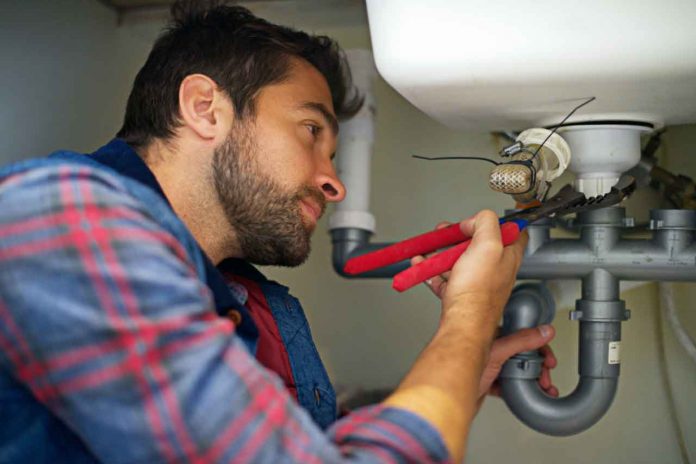There’s no end to the trouble that failing to winterize your pipes can cause for your home. Thankfully, there’s plenty of technology and methods that you can use to make sure your pipes are winterized effectively. Have a look at some of them so you can make sure that your home’s pipes aren’t a disaster waiting to happen when the weather freezes over.
Insulate Your Septic System
Your septic system needs to get some attention during winter to ward off any potential disasters. While it’s a watertight container that’s typically made out of polyethylene, fiberglass, or concrete and that’s buried underground, frost can still get to it. That said, you could place an eight to 12-inch thick layer of mulch over the tank, pipes, and soil treatment system. Whether it’s hay, leaves, straw, or any other loose material that won’t get compacted, this is going to provide additional insulation to your septic system. It’s important for you to do this before the ground freezes so you don’t delay thawing when the weather gets warmer.
Turn Off All Outdoor Faucets
If you have outdoor faucets, make sure to turn them off at their shutoff valves. First, open the faucet and then the bleeder cap on the shutoff valve so that any water in the pipe will be drained out. This will save the pipe from cracking when the water inside it freezes. Place a bucket under the bleeder cap to catch any drips and leave the cap open. If the dripping doesn’t stop, you need to replace the shutoff valve.
Fix Any Leaks You Find
If there are any leaks in your plumbing, it’s important to fix them before winter sets in in earnest. This is because they can lead to a much bigger issue down the road, with water freezing in the pipes at points that you thought had no water in them. Note that 10% of homes, according to the Environmental Protection Agency, have leaks that waste 90 or even more gallons of water per day. By fixing leaks in your plumbing, you’ll also be doing a major service to the environment and can save some money on your monthly water bill to boot.
Call a Plumber If You Have Any Issues
It’s important to have a professional plumber look at your plumbing system and deal with any issues that exist. They’ll come armed with the right tools and technology to make sure that your plumbing doesn’t act up in the thick of winter. Keep in mind that three of the common signs that should let you know that you need to call a plumber to your home are having low water pressure, getting odd smells from the drain, and hearing strange sounds coming from the pipes. If you notice any of these issues, it’s a good idea to call a plumber right away instead of waiting for things to worsen.
Get a Wi-Fi Thermostat
Last but not least, leverage technology by installing a Wi-Fi thermostat. This is going to let you monitor and control your home’s temperature with your smartphone. In case of a temperature drop in your home, the system will notify you with a text or email. Different systems may also have different ways of sending these alerts, but the most important thing is that you’ll be aware of lowered temperatures fast enough to act and avert a potential disaster.
Use this guide to make sure that your home’s plumbing is properly winterized. Doing so is going to afford you some important peace of mind. You can also be sure that your home won’t be at risk of water damage, something that can cost you a tidy sum to fix.







